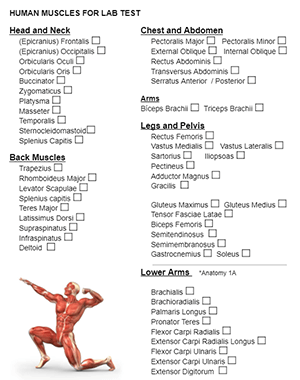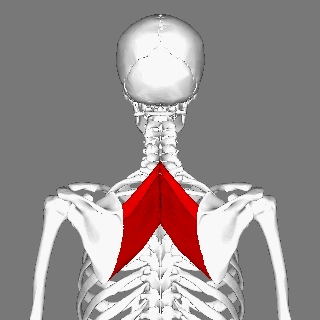
I divide the muscle unit of my anatomy class into two sections. The first deals with the physiology of muscles, how they contract, and the tissues involved. In the second section, the focus is on the names of muscles and how they move the body.
Students examine muscles of the body in sections, starting with the head and neck. I focus on the major muscles, so not every muscles is included in their need-to-know list.
Students color and label diagrams from slides projected on the whiteboard. Try to go slow; learn the origins of the names and discuss how the muscles move while students color.
Google Muscle Slides: Head | Chest and Back | Legs
The arm muscles are included for my honors section. They are required to learn those on their own, using the tools provided and a few links to interactive diagrams: arm flexors and extensors.
Study and Assessment
I encourage students to explore other resources, such as practice naming the muscles using Quizlet study sets. We don’t have many muscle models in class. They are expensive! You can also use expo whiteboard markers to have students draw on skin, particularly when learning the arm muscles. Another fun activity for students is the “Poke a Muscle” game. Wikipedia has some amazing animated muscle images.

I usually do slide assessments, to mimic what a lab practical might look like. Students have 1 minute to write down the name of the muscle shown on the slide. Alternatively, students can use paper where the whole body is shown with numbers or letters.

